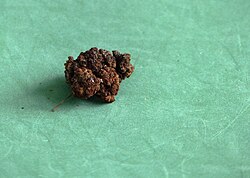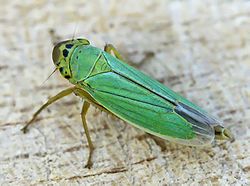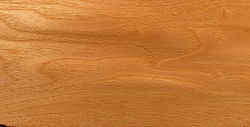Fraxinus excelsior range
- Native continuous range
- ✖ Native isolated population
- ▲ Introduced and naturalized (synanthropic)
Caudullo, G., Welk, E., San-Miguel-Ayanz, J., 2017. Chorological maps for the main European woody species. Data in Brief 12, 662-666. DOI: 10.1016/j.dib.2017.05.007
Data: https://doi.org/10.6084/m9.figshare.5110732
References:
- Afonin, A. N., Greene, S. L., Dzyubenko, N. I., Frolov, A. N. (Eds.), 2008. Interactive Agricultural Ecological Atlas of Russia and Neighbouring Countries: Economic Plants and their Diseases, Pests and Weeds. http://www.agroatlas.ru. Accessed in August 2016.
- Alía Miranda, R., García del Barrio, J. M., Iglesias Sauce, S., Mancha Núñez, J. A., de Miguel y del Ángel, J., Nicolás Peragón, J. L., Pérez Martín, F., Sánchez de Ron, D., 2009. Regiones de procedencia de especies forestales en España. Organismo Autónomo Parques Nacionales, Madrid.
- Babac, M. T., Uslu, E., Bakis, Y. TÜBİVES - Turkish Plants Data Service. Accessed in August 2016.
- Biodiversity Research Center - Institute of Botany. Flora Database of the Czech Republic. Accessed in August 2016.
- Bohn, U., Gollub, G., Hettwer, C., Weber, H., Neuhäuslová, Z., Raus, T., Schlüter, H., 2000. Karte der natürlichen Vegetation Europas; Map of the Natural Vegetation of Europe. Landwirtschaftsverlag. ISBN 9783784338095
- Botanical Society of Britain & Ireland. BSBI big database. Accessed in May 2016.
- Conservatoire et Jardin botaniques de la Ville de Genève (CJB), Pro Natura, Société Botanique Suisse, Académie Suisse des Sciences Naturelles. Info Flora. Accessed in August 2016.
- EUFORGEN, 2009. Distribution map of Common ash (Fraxinus excelsior). www.euforgen.org
- European Information System on Forest Genetic Resources. EUFGIS database. Accessed in September 2016
- GBIF.org, 2016. Artdata. DOI: 10.15468/dl.vhlsf9
- GBIF.org, 2016. Banco de Datos de la Biodiversidad de la Comunitat Valenciana. DOI: 10.15468/dl.iru4gq
- GBIF.org, 2016. Botanical Society of the British Isles - Vascular Plants Database additions since 2000. DOI: 10.15468/dl.wzy04e
- GBIF.org, 2016. Botanical Society of the British Isles - Vascular Plants Database. DOI: 10.15468/dl.c7xheb
- GBIF.org, 2016. Dutch Vegetation Database (LVD). DOI: 10.15468/dl.km20zh
- GBIF.org, 2016. Fieldjournal.org observation database. DOI: 10.15468/dl.qfbdxi
- GBIF.org, 2016. FloVegSI - Floristical and fitocenological database of ZRC SAZU. DOI: 10.15468/dl.emozjq
- GBIF.org, 2016. FloraCAT: Banco de datos de los cormófitos de Cataluña. DOI: 10.15468/dl.biuda7
- GBIF.org, 2016. Florabank1 - A grid-based database on vascular plant distribution in the northern part of Belgium (Flanders and the Brussels Capital region). DOI: 10.15468/dl.t9ewq8
- GBIF.org, 2016. Floristic Databases of Mecklenburg-Pomerania - Higher Plants. DOI: 10.15468/dl.ttbnoc
- GBIF.org, 2016. Fundación Biodiversidad, Real Jardín Botánico (CSIC): Anthos. Sistema de Información de las plantas de España. DOI: 10.15468/dl.9uo7is
- GBIF.org, 2016. Herbarium of Jyväskylä University Museum. DOI: 10.15468/dl.qlmmfd
- GBIF.org, 2016. INPN - Données flore des CBN agrégées par la FCBN. DOI: 10.15468/dl.gkp7wm
- GBIF.org, 2016. Institute of Dendrology PAS, Flora of Sudety Mountains. DOI: .15468/dl.kybkpr
- GBIF.org, 2016. Karl Franzens University of Graz, Insitute for Botany - Herbarium GZU. DOI: 10.15468/dl.4ok78i
- GBIF.org, 2016. National System of Protected Areas in Poland - Plants. DOI: 10.15468/dl.ym4vmn
- GBIF.org, 2016. Norwegian Species Observation Service. DOI: 10.15468/dl.6domy8
- GBIF.org, 2016. Occurrence Data of Vascular Plants collected or compiled for the Flora of Bavaria. DOI: 10.15468/dl.olxxvo
- GBIF.org, 2016. Sistema de Información de la vegetación Ibérica y Macaronésica. DOI: 10.15468/dl.m8zdd8
- GBIF.org, 2016. University of Vienna, Institute for Botany - Herbarium WU. DOI: 0.15468/dl.x5raqx
- GBIF.org, 2016. Vascular plants in Denmark recorded under the The Nationwide Monitoring and Assessment Programme for the Aquatic and Terrestrial Environments (NOVANA). DOI: 10.15468/dl.hnqokh
- Hultén, E., 1971. Atlas över växternas utbredning i Norden, 2nd edition. Generalstabens litografiska anstalts förlag, Stockholm.
- Hultén, E., Fries, M., 1986. Atlas of North European vascular plants (North of the Tropic of Cancer), Vols. I-III. Koeltz scientific books. ISBN 3874292630
- Meusel, H., Jäger, E. J., Rauschert, S., Weinert, E. (Eds.), 1978. Vergleichende Chorologie der Zentraleuropäischen Flora, Band II. Gustav Fischer Verlag, Jena.
- Nikolić, T. (Ed.), 2015. Flora Croatica Database. Faculty of Science, University of Zagreb. Accessed in August 2016.
- Real Jardín Botánico, CSIC - Fundación Biodiversidad. Anthos - Information System of the plants of Spain. Accessed in August 2016.
- Schicchi, R., Marino, P., 2011. Taxa relitti della flora forestale siciliana e problemi di conservazione. Biogeographia 30: 141-150.
- Sokolov S. I., Svjaseva O. A., Kubli V. A., 1986. Areas of distribution of trees and shrubs in the USSR, vol 3. Nauka, Leningrad, 182 pp. (In Russian)
- Tela Botanica. eFlore. Accessed in August 2016.
Relevante Bilder
Relevante Artikel
Gemeine EscheDie Gemeine Esche, Gewöhnliche Esche oder Hohe Esche, auch Hochesche und kurz nur Esche genannt, ist eine in Europa heimische Baumart aus der Gattung der Eschen. Mit einer Wuchshöhe von bis zu 40 m zählt sie zu den höchsten Laubbäumen Europas. An exponierteren Standorten erreicht das Ölbaumgewächs jedoch nur um 15 bis 20 m. Durch die starke Konkurrenz der Buche, mit der sie häufig vergesellschaftet vorkommt, ist sie in größeren Beständen überwiegend in Waldgesellschaften auf feuchteren oder trockeneren Standorten anzutreffen, auf denen die Konkurrenzkraft der Buche nachlässt. Eschenholz zählt zu den Edellaubhölzern. Nach Buche und Eiche gehört es zu den wichtigsten Laubnutzhölzern Mitteleuropas. Eschenholz wird meist eingesetzt, wenn hohe Ansprüche an Festigkeit und Elastizität gestellt werden. So wird es häufig zur Herstellung von Werkzeugstielen, Sportgeräten und von Biegeformteilen verwendet. .. weiterlesen
























